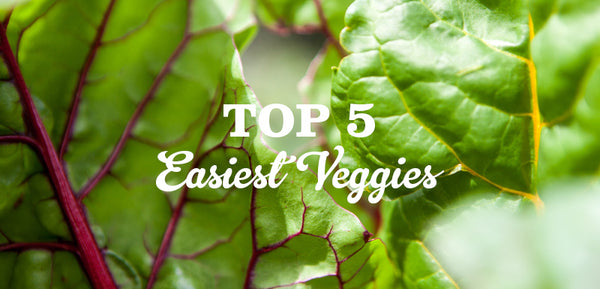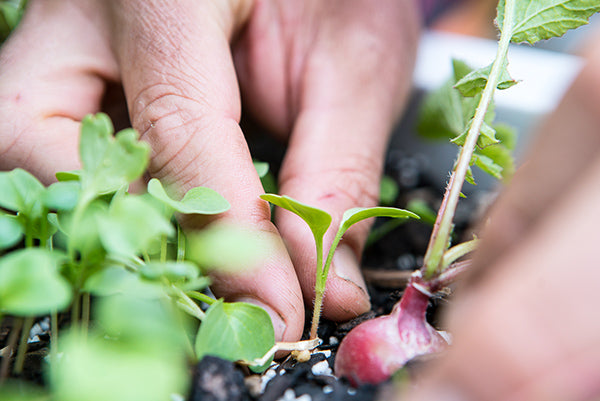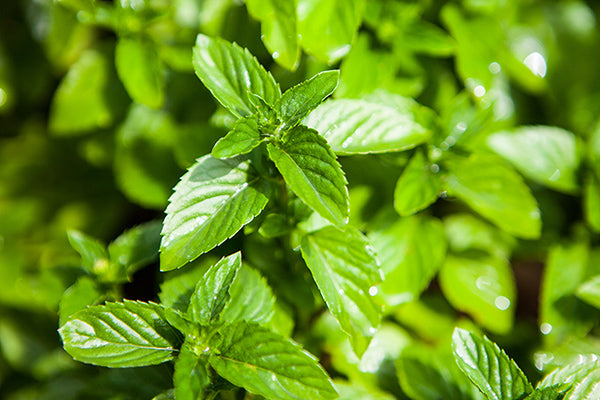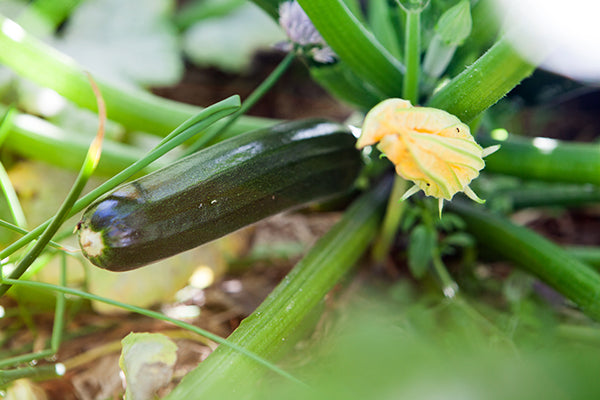Easiest Veggies to Grow

Whether we are at our nursery, running a workshop, or selling at markets we often get the same question, delivered in the same way. A person hovers at a distance, vaguely examining our seeds or seedlings then, when no one else is around, they rush in close and in a hushed voice ask, "which plants are the easiest to grow?" This question is often accompanied by a shy, embarrassed smile that begs for forgiveness.
It's such a shame that people should ever feel embarrassed for asking a question. Especially this question. We all garden to the best of our abilities and that means learning from our failures. We believe that the best person at anything is the person that is having the most fun, and often times that means starting with something easy to build your confidence. Call this list our Top 5 confidence booster veggies, our Top 5 easiest to grow veggies, even call it our Top 5 dancing with yourself veggies. We want everyone having some success in the garden and these plants will give you the best chance (just add water).

Radish is not only a veggie for people with short attention spans (seed to harvest in about 5 weeks), it is also very easy to grow and can be planted year around. They will grow in most soil types, but like many vegetables, prefer a medium that drains well. Plant radish seeds directly into a garden bed or pot about 5cm apart and water 2-3 times per week (more in the summer). If you have an especially short attention span, radish is an excellent seed to grow as micro green and small shoots can be harvested within a week of planting.
Tip: For an extra boost in root growth, apply phosphorous-rich blood and bone organic fertiliser to the soil prior to planting.
Spring Onion is the perfect kitchen garden plant. It is difficult to kill, grows with limited to full sun, and can be perpetually harvested without replanting. Spring onion can be planted year around and will tolerate a multitude of soil types. Whether growing in a pot or garden bed, space seeds/seedlings about 5cm apart and water 3 times per week. Once seedlings are established, spring onion should only require water once per week (more in hot weather).
We cringe when we see spring onion ripped from the ground, as it represents a complete failure to exploit its super powers for regrowth. Harvest spring onion by snipping it near the base with sharp scissors. Like a lizard's tail, spring onion will grow a new shoot and be ready for another harvest in no time.
Tip: Don't let spring onion go too long without a harvest or they will go slimy on the inside. Still perfectly edible, but approaching the aloe realm.

Mint is not a vegetable. We know. But it is an expensive culinary herb that grows like a weed. Hot or cold, wet or dry, full sun or shade, mint will do its very best to eek out a life for itself. Whether you are trying to cut costs on your mojito habit or adding freshness to every dish, look no further than mint for the perfect combination of ease and value.
We know that premium real estate can be hard to come by, that is a well-draining, sunny position, especially in the city. Mint is a good plant for your b-spot, that seemingly cursed piece of land where nothing grows.
Although it is not fussy about where you plant it, we like to grow mint in larger pots (minimum 30cm diameter) so that it has room to grow without taking over the garden. Seeds are extraordinarily small and should be scattered in your desired growing area and lightly covered with soil. Gently water each day with a watering can or spray bottle (a heavy stream will dislodge seeds). They can take about 30 days to germinate, so don't give up if you don't see any growth within a couple of weeks. Stay the course!
Tip: A fortnightly spray of seaweed solution on the foliage will help to promote prize-winning foliage.
 Zucchini and squash are glamorous summer crops, but unlike their beloved peer the tomato, they are much less demanding. Prepare the soil with good quality organic compost and sow seeds in late spring or early summer, spacing them about 1.5m apart. In small spaces, one or two plants should be sufficient.
Zucchini and squash are glamorous summer crops, but unlike their beloved peer the tomato, they are much less demanding. Prepare the soil with good quality organic compost and sow seeds in late spring or early summer, spacing them about 1.5m apart. In small spaces, one or two plants should be sufficient.
Water is key for all summer crops and gourds are no exception. Get out there every morning to water and bask in your garden glory. New growth can be pinched or cut back to encourage fruit production on existing flowers, but a hands-off approach will also yield dividends. This is a great entry level summer crop, as you can either fuss or let it run wild to great results.
Tip: While plants can become very sprawling, they don't need a lot of soil to grow. Plant seeds near the edge of the garden bed or in a large pot (at least 30cm diameter). Many zucchini and squash can be trained up or along trellis, which is a great way to conserve space.

Silverbeet, also known as Swiss Chard is the lazy gardener's kale. It's a hearty and nutritional heavy hitter that can grow year around. The hardest part about growing swiss chard is keeping up with the harvest.
Soak seeds in water overnight, prior to planting, to improve germination and sow directly into free-draining soil. Chard will do equally well in pots or an inground garden, just be sure space seeds about 30cm apart (this often means only one plant per pot).
Silverbeet will require daily water until seedlings mature, and then can handle about 2-3 times per week thereafter. It is a quick grower and foliage should be harvest leaf-by-leaf from the outside of the plant. Harvest larger leaves first so that the plant can redirect energy to new growth.
Tip: A fortnightly dose of liquid seaweed solution or other organic fertiliser will ensure plants get sufficient nitrogen for continual foliage growth.
-
Posted in
Top 5
